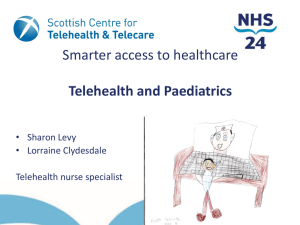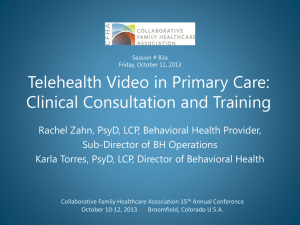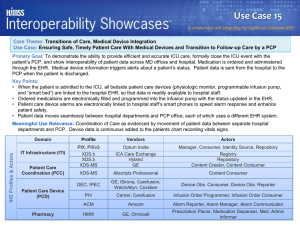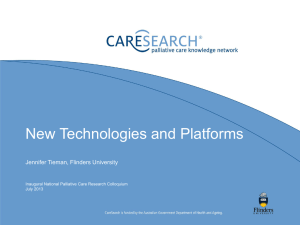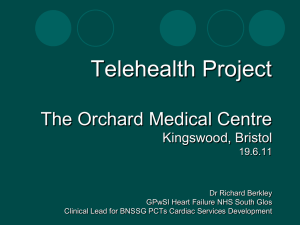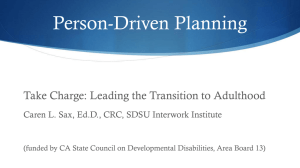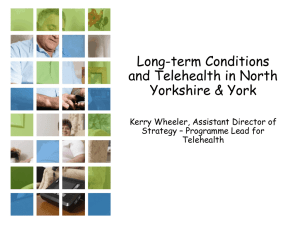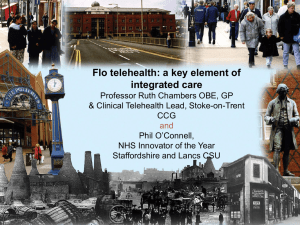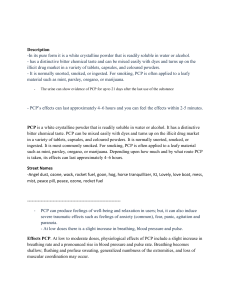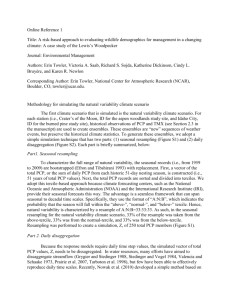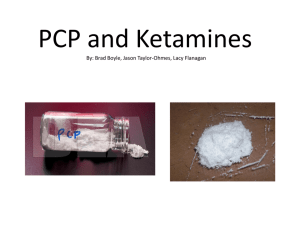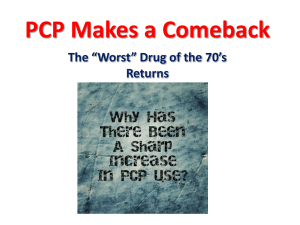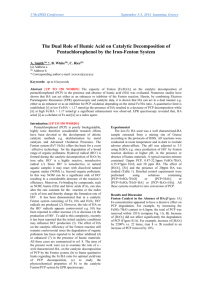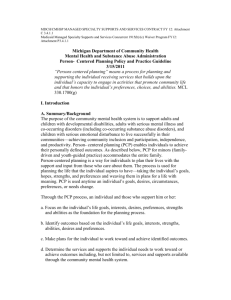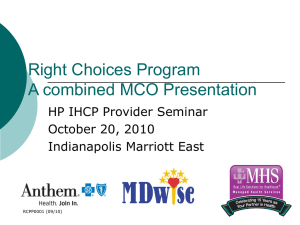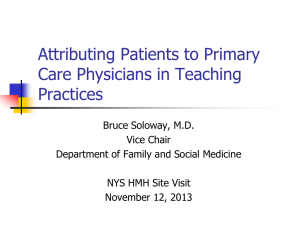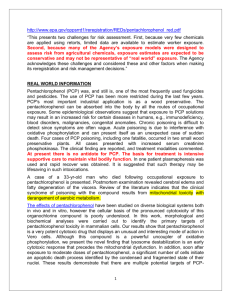4th Annual Eastern Regional Patient Safety and Quality
advertisement
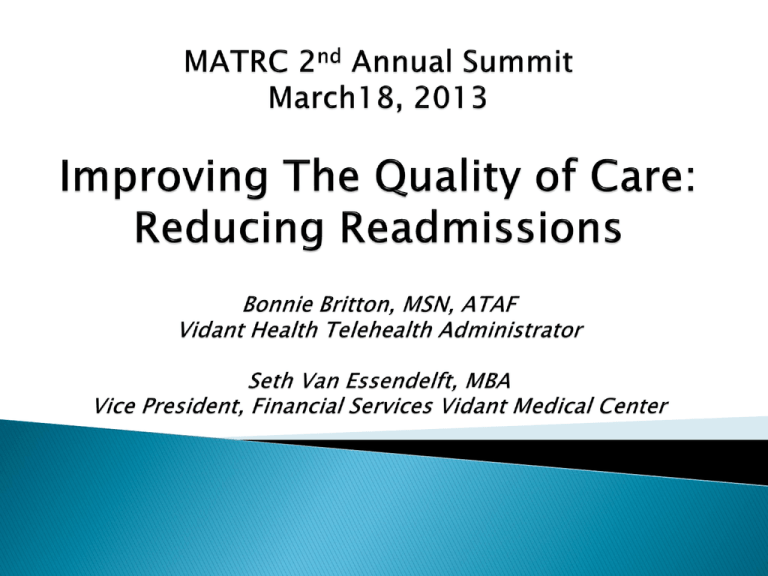
Examining the “Boomerang Effect” Discussing financial implications for Telehealth Discussing Vidant Health’s Telehealth Program and outcomes Questions and Answers 2 3 4 81 y.o: CVD, HF, DM, Arthritis Exacerbation of Heart Failure ◦ Not following his diet ◦ Not taking all of his medications (8 meds) ◦ Not keeping PCP visits ◦ Low engagement level 8 HF ER visits and 6 hospitalizations < 12 mos. 5 Told he will be d/c home tomorrow PCP not alerted that Mr. Doe was hospitalized Given new prescriptions Told to schedule a PCP appt. in the next month 6 Patient education: ◦ Smoking cessation ◦ Diabetes care ◦ Nutrition and cooking advice to him and his wife ◦ Must take BP meds even if he feels fine ◦ How to take his diuretics 7 Forgets most of what was told to him @ D/C Can’t remember much/feeling OK- Not consistently compliant with diet, medication Doesn’t make PCP appointment 8 Patient issues ◦ Don’t understand their medications ◦ Don’t understand how to follow prescribed diet ◦ Can’t afford their medications ◦ Can’t afford foods to follow their diet ◦ Low engagement level 9 Hospital issues: Focus: inside walls of the hospital Post d/c service focus: HH & LTC Incorrect or absent medication reconciliation Extremely limited system of care transitions Brief & fragmented patient education PCP not contacted during hospitalization Fragmented communication between clinics/specialists/hospital ◦ Dictate to patients vs. engage them in their care ◦ ◦ ◦ ◦ ◦ ◦ ◦ 10 To enhance the quality of life for the people and communities we serve, touch and support. 12 Discharge Options Physician/Home SNF LTAC Rehab Home Health Hospice Patient Hospital Palliative Care Remote Monitoring 13 Remote Monitoring Patient Doctor 14 Telehealth Intervention 15 Expand access to care Improve healthcare value Continuum of care Best utilize capacity Connect with local employers Improve physician network Improve employer health plan cost position Develop care models of the future 16 Reimbursement Reform penalties Capacity utilization It is all relative 17 Overview and process Expectations Lessons learned ◦ ◦ ◦ ◦ ◦ Adaptation varied Operational details Length of monitoring assumptions Data requirements Keep the big picture in focus 18 Stop Bonnie from beating on my door! Pilot enhanced continuity of care model Capture & quantify financial levers 19 Back to the Future 20 Hey Norton - you will get out of your telehealth program exactly what you put into it! 21 VH Telehealth Conceptual Model Diagnostic Transitions In Care Chronic Disease Mgt. Friends & Family 22 September 2012 Access to Telehealth and care management for hi-risk hi-cost patients Reduce 30-day readmissions, hospital bed days and ER visits Improve clinical outcomes Improve the patient’s perception of care Improve quality of health information 23 Population: In-patient CVD and Pulmonary patients PAM Level I & II Frequent ER visits/hospitalizations Medicare/self pay/un/underinsured Services: In-home medication reconciliation Home Safety Assessment Daily Biometric data monitoring Weekly telephonic assessment, education, coaching LOS: 3 months 24 Access to Telehealth and care coordination for hi & medium-risk VMG patients Increase patient access to care Improve quality of health information and communication between hospital- home – PCP Improve clinical outcomes Improve the patient’s perception of care Reduce health care costs 25 Population: Clinic based patients PAM Level I & II – VMG Patients PAM Level III with frequent ED/hospitalizations Transfer from Transition in Care Program monitoring Services: In-home medication reconciliation Home Safety Assessment Daily Biometric data monitoring Daily telephonic assessment, education, coaching as needed Bi-weekly assessment, education, coaching LOS: 6 months 26 Population: Graduates of TH TIC, TH CDM VH Employees Contracted Services (Nash, BasisHealth) Services: Self management monitoring Biometric data monitoring Fee for service LOS: TBD 27 Clinical Data ◦ LDL, BP, Pulse, Height, Weight, HgA1c, oxygen saturation Patient Satisfaction Financial Outcomes- 90 days pre TH, during TH, 30 days post TH ◦ Hospitalizations ◦ Bed Days 28 (N=926) 22% Medicare 10% 56% Medicaid 12% No Insurance/Self Commerical 29 (N=926) 44% Male 56% Female 30 (N= 926) 3% 4% 2% 1% 3% HTN HF 33% 54% COPD CHF/HTN Asthma Asthma/ HTN HF/HTN 31 (N=926) 3% 13% 18% 19% 23% 24% 18-49 50-59 60-69 70-79 80-89 90-99 32 (N =926) 2% 9% 9% 18% 34% 28% < 30 days 30 days 60 days 90 days current > 90 days 33 (N=325) 1% 43% 56% STRONGLY AGREE AGREE DISAGREE 34 Total Patients (N=695) Discharge Patients (N=544) 900 800 772 700 600 500 90 Days Prior 400 During 300 200 30 Days Post 257 143 100 0 Reductions Of Hospitalizations • Decreased by 69% Prior to During • Decreased by 76% Prior to Post 35 Total Patients (N=695) Discharged Patients (N=544) 4,000 3,500 3,458 3,000 2,500 90 Days Prior 2,000 1,500 During 30 Days Post 1,124 1,000 753 500 0 Hospital Bed Days Decreased by 67% Prior to During Decreased by 81% Prior to Post 36 8.0 7.0 7.0 6.0 6.0 5.0 5.0 Millions Millions 8.0 4.0 3.0 4.0 3.0 2.0 2.0 1.0 1.0 - - Reimbursement Hospitalization Costs 90 Days Prior During 30 Days Post 90 Days Prior During 30 Days Post 37 Lower hospitalization cost Readmission aversion More effective and efficient care Improved access to care at the appropriate levels Greater patient satisfaction 38 Reduces readmissions penalties exposure Capacity – increasing CMI & fewer lost admissions Expands margins Reduces bad debt losses Improved discharge planning process Reduces employer health plan costs Creates value proposition Created retail opportunities 39 At Hospital Discharge: ◦ D/C with the same medications & education ◦ Cardiologist & hospitalist make referral to TH ◦ TH referral received by Telehealth Team ◦ In-hospital enrollment ◦ PCP visit appt. made ◦ Home visit appt. made 40 Patient conducts reading. Wt. increased by 2 lbs. TH RN calls patient to review medication and diet compliance See - Feel Change TH RN provides nutrition counseling 41 Objective data: ◦ Wt. increased by 4 pounds ◦ O2 sat. decreased to 92% ◦ BP slightly elevated @ 145/90 Subjective data: ◦ Reporting SOB and ankle edema 42 Actions ◦ TH RN calls patient, conducts health assessment and provides education ◦ Discovers patient ate Country Ham last night ◦ Didn’t take his Lasix because he had no money ◦ See - Feel Change ◦ TH RN contacts PCP ◦ PCP instructs pt. to come to clinic today 43 Conducting in-home med. rec. & providing RPM services result in: ◦ Early identification and tx of disease exacerbation ◦ Reduced hospitalizations ◦ Reduced bed days ◦ Reduced ER visits ◦ Reduced health care costs ◦ Ending the Boomerang Effect ◦ Active engaged patients 44 45 46

